Definition
Mumps is an infection caused by a type of virus called a paramyxovirus. It is very contagious and spread in saliva, the same way as a cold or flu. This means it can be caught from an infected person coughing, sneezing, etc. It can also be caught from touching infected objects – for example, door handles.
Mumps virions are pleomorphic particles ranging from 100 to 600 nm in size, consisting of a helical ribonucleoprotein (RNP) core surrounded by a host cell–derived lipid envelope. The RNP consists of a single-stranded RNA (ssRNA) molecule coated by the viral nucleoprotein. The RNP appears to be a hollow tube with a unit length of approximately 1 mm, a diameter of 17 to 20 nm, and a central core of 5 to 6 nm. The viral host cell–derived envelope contains the viral glycoproteins that project 12 to 15 nm from the virion surface.
Spreading and incubation period of Paramyxovirus
- The virus is acquired by respiratory droplets. It replicates in the nasopharynx and regional lymph nodes.
- After 12 to 25 days a viremia occurs, which lasts from 3 to 5 days. During the viremia, the virus spreads to multiple tissues, including the meninges, and glands such as the salivary, pancreas, testes, and ovaries.
- Inflammation in infected tissues leads to characteristic symptoms of parotitis and aseptic meningitis.
- The incubation period of mumps is 14 to 18 days (range, 14 to 25 days).
History
In the 5th century bc, Hippocrates described a mild epidemic illness associated with nonsuppurative swelling near the ears and, variably, with painful swelling of one or both testes. These descriptions of parotitis and orchitis, respectively, are the hallmarks of mumps virus (MuV) infection. The name mumps may derive from an old English verb that means to grimace, grin, or mumble. Hamilton, a physician of the late 18th century, is credited as being the first to associate central nervous system (CNS) involvement with mumps in his description of the neuropathology of a fatal case. Later studies would reveal MuV as a highly neurotropic agent and a leading cause of virus-induced aseptic meningitis and encephalitis.
A number of laboratory investigations suggested that a filterable, transmissible agent was responsible for mumps. However, a viral etiology was not proven until 1935 when Johnson and Goodpasture, using bacteria-free parotid secretions, successfully transmitted the disease between monkeys and children and then back to naïve monkeys, fulfilling Koch’s postulates. The demonstration by Habel145 and Enders108 in 1945 that MuV could be isolated and propagated in embryonated eggs enabled the demonstration of the hemagglutinating, hemolytic, and neuraminidase properties of the virus, leading to the development of an inactivated vaccine in 1946 and to the first live virus vaccine in 1958. The introduction of tissue culture as a practical alternative for the propagation and study of the virus in 1948 was pivotal for advancing studies of the epidemiology and pathogenesis of the disease as well as the molecular biology of the virus, permitting the development of cell-based vaccines.
Epidemiology at worldwide
The mumps virus is present throughout the world and hence, risk of exposure to mumps outside the United States may be high. In many countries worldwide, mumps remains endemic. The mumps vaccine is in use in only 57% of countries belonging to the World Health Organization (WHO), predominantly those countries with more developed economies.
Worldwide variations in the number of persons who receive the mumps vaccination make it difficult to estimate the number of cases. The incidence varies markedly from region to region.
Causes of mumps
Mumps is due to an infection by the mumps virus. It can be transmitted by respiratory secretions (e.g. saliva) from a person already affected with the condition. When contracting mumps, the virus travels from the respiratory tract to the salivary glands and reproduces, causing the glands to swell.
Examples of how mumps can be spread include:
- Sneezing or coughing.
- Using the same cutlery and plates as an infected person.
- Sharing food and drink with someone who is infected.
- An infected person touching their nose or mouth and then passing it onto a surface that someone else may touch.
Individuals infected with the mumps virus are contagious for approximately 15 days (6 days before the symptoms start to show, and up to 9 days after they start).
What are risk factors for contracting mumps?
- Failure to vaccinate completely (two separate doses) with exposure to those with mumps
- Age: The highest risk of contracting mumps is to a child between 2-12 years of age.
- Season: Outbreaks of mumps were most likely during the winter/spring seasons.
- Travel to high-risk regions of the world: Africa, general Indian subcontinent region, and Southeast Asia. These areas have a very low rate of immunization.
- Weakening immune system: either due to diseases (for example, HIV/AIDS, cancer) or medication (oral steroid use for more than two weeks, chemotherapy).
- Born before 1956: Generally, these individuals are believed to have experienced mumps infection in childhood. However, if they did not, they are at risk for adult mumps disease.
Signs & Symptoms of Mumps
The most common symptoms include:
- Fever
- Headache
- Muscle aches
- Tiredness
- Loss of appetite
- Swollen and tender salivary glands under the ears on one or both sides (parotitis)
Symptoms typically appear 16-18 days after infection, but this period can range from 12-25 days after infection. Some people who get mumps have very mild or no symptoms, and often they do not know they have the disease. Most people with mumps recover completely in a few weeks.
Notify your healthcare provider if you have any of the following:
- Swelling that lasts longer than seven days
- Headaches not relieved with medication
- Ongoing fever
- Nausea and vomiting
- Swelling accompanied by redness or warmth
- Decreased hearing
- Neck stiffness
- Pain or swelling in testicles (male)
- Abdominal Pain
Complications of mumps
Complications are more frequent in adults than children, the most common are:
- Orchitis – testicles swell and become painful, this happens to 1 in 5 adult males with mumps. The swelling normally goes down within 1 week; tenderness can last longer than that. This rarely results in infertility.
- Oophoritis – ovaries swell and are painful; it occurs in 1 in 20 adult females. The swelling will subside as the immune system fights off the virus. This rarely results in infertility.
- Viral meningitis – this is one of the rarest of the common complications. It happens when the virus spreads through the bloodstream and infects the body’s central nervous system (brain and spinal cord).
- Inflamed pancreas (pancreatitis) – pain will be experienced in the upper abdomen; this occurs in 1 out of 20 cases and is usually mild.
- Electrocardiogram changes compatible with myocarditis are seen in 3%–15% of patients with mumps, but symptomatic involvement is rare. Complete recovery is the rule, but deaths have been reported.
If a pregnant woman contracts mumps in the first 12-16 weeks of her pregnancy, she will have a slightly increased risk of miscarriage.
Rarer complications of mumps include:
- Encephalitis – the brain swells causing neurological issues. In some cases, this can be fatal. This is a very rare risk factor and affects just 1 in 6,000 cases.
- Hearing loss – this is the rarest of all the complications affecting just 1 in 15,000.
- Other less common complications of mumps include arthralgia, arthritis, and nephritis.
Tests and diagnosis of mumps
Normally, mumps can be diagnosed by its symptoms alone, especially by examining the facial swelling. A doctor might also:
Check inside the mouth to see the position of the tonsils – when infected with mumps, a person’s tonsils can get pushed to the side.
- Take the patient’s temperature.
- Take a sample of blood, urine, or saliva to confirm diagnosis.
- Take a sample of CSF (cerebrospinal fluid) from the spine for testing – this is usually only in severe cases.
Treatment
Because mumps is viral, antibiotics cannot be used to treat it, and at present, there are no anti-viral medications that can treat mumps.
Current treatment can only help relieve the symptoms until the infection has run its course and the body has built up an immunity, much like a cold. In most cases, people recover from mumps within 2 weeks.
Due to the viral nature of mumps, treatment focuses on decreasing symptoms.
- Eat soft, bland foods that do not require much chewing. Examples include oatmeal, bananas, pasta, potatoes, eggs, gelatin, cooked vegetables, applesauce and tender cooked meats.
- Avoid tart drinks and sour foods since they can irritate the swelling and cause pain. Examples of these include orange juice, salad dressing, and pickles.
- Apply heat or cold packs to the cheeks. Some people find warm compresses to be more soothing while others from cold compresses provide more pain relief.
- Use over-the-counter medication such as acetaminophen or ibuprofen to reduce fever and pain.
- Get extra rest and stay well hydrated with plenty of fluids such as water, Sprite, bouillon, milk and popsicles.
- If orchitis develops, treat this with bed rest, ice packs, ibuprofen and provide support to inflamed testicles by wearing tight fitting underwear or an athletic supporter.
Prevention
- Immunisation given on-time is the best method of preventing mumps. The measles, mumps, rubella vaccine (MMR) is given as part of the immunisation schedule at 15 months and 4 years of age. No mumps-only vaccine is available in New Zealand.
- People with mumps are excluded from early childhood education, school and work until nine days after the appearance of swollen salivary glands to protect others from infection.
- Contacts of mumps cases, who are not immune to mumps e.g. those who are unvaccinated, are excluded from early childhood education, school and work until 25 days after the appearance of swollen glands in the last case they were in contact with.
- Anyone born after the 1990s would most probably have been given the MMR vaccine but, if unsure, it is always good to check with a doctor.
MMR vaccine side effects
Most people given the MMR vaccine do not suffer side effects, and the disease itself cannot be contracted from the vaccine. A small percentage might develop a rash or fever and possibly aches in their joints.
Preventing the spread of mumps
There are a number of precautions that help prevent the spread of infection; these are:
- Washing hands with water and soap frequently.
- Not going into work/school until 5 days after the symptoms start.
- Covering the nose and mouth with a tissue when sneezing or coughing.
 Diseases Treatments Dictionary This is complete solution to read all diseases treatments Which covers Prevention, Causes, Symptoms, Medical Terms, Drugs, Prescription, Natural Remedies with cures and Treatments. Most of the common diseases were listed in names, split with categories.
Diseases Treatments Dictionary This is complete solution to read all diseases treatments Which covers Prevention, Causes, Symptoms, Medical Terms, Drugs, Prescription, Natural Remedies with cures and Treatments. Most of the common diseases were listed in names, split with categories.
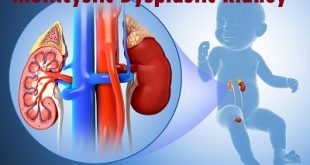

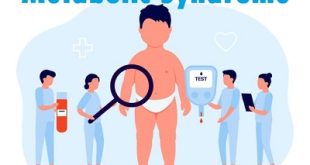
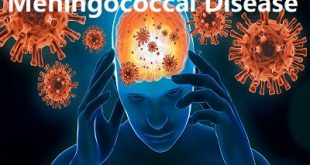

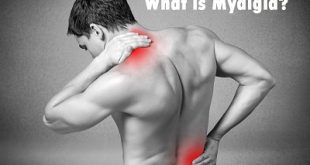
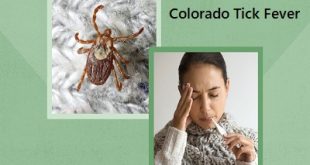

very useful, this application help’s in our Nursing job.
une bonne application pour nous les infirmier.
what treatment can be given to someone who is suffering from Orchitis through mumps
Supportive treatment includes the following:
Bed rest
Hot or cold packs for analgesia
Scrotal elevation
use of nonsteroidal anti-inflammatory agents)
Full recovery can take several weeks
what is the best medication for mumps?
Rest when you feel weak or tired. Take over-the-counter pain relievers, such as acetaminophen and ibuprofen, to bring down your fever. Soothe swollen glands by applying ice packs.
it’s very nice to read from this handout and off course the patients are improving.
I am suffering from mumps these days, you have provided very useful information about the disease and it’s treatment,Thank you.